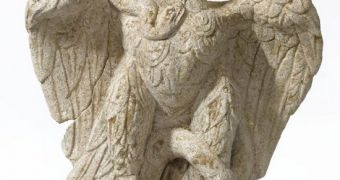Archaeologists carrying out excavations in London have recently discovered a statue of an eagle that is quite busy turning a scary-looking snake into its dinner.
At a first glance, the statue appeared to be Roman in style. Still, given the fact that it looked surprisingly well preserved, archaeologists first assumed that it was not an original, but a copy created some time after the end of the Roman rule.
Leave it to specialists working with the Museum of London to make minced meat of these assumptions. Thus, after closely examining the statue, they concluded that it was an original, and that it was some 1,900 years old.
Interestingly enough, it appears that it is only the second statue of its kind to have thus far been discovered by archaeologists. According to Daily Mail, its “sister” was unearthed back in 1937 in Jordan.
The same source tells us that the statue is made from oolitic limestone. It measures about 64 centimeters (25 inches) in height, and 55 centimeters (21.5 inches) in width.
As far as its meaning is concerned, specialists say that the image of the eagle devouring the snake is supposed to symbolize the triumph of good over evil and that the sculpture was probably created to honor the god Jupiter.
The statue was found beneath a busy street in London, fairly close to the city's famous Tower. The foundations of a mausoleum were also unearthed at this archaeological site and researchers have reasons to believe that, at some point, the statue adorned this construction.
“Funerary sculpture from the city is very rare and this example, perhaps from inside a mausoleum, is a particularly fine example which will help us to understand how the cemeteries and tombs that lined the roads out of the city were furnished and the beliefs of those buried there,” specialist Michael Marshall explains.
The statue will go on display at the Museum of London this coming November 1. It will stay on display for six months.

 14 DAY TRIAL //
14 DAY TRIAL //